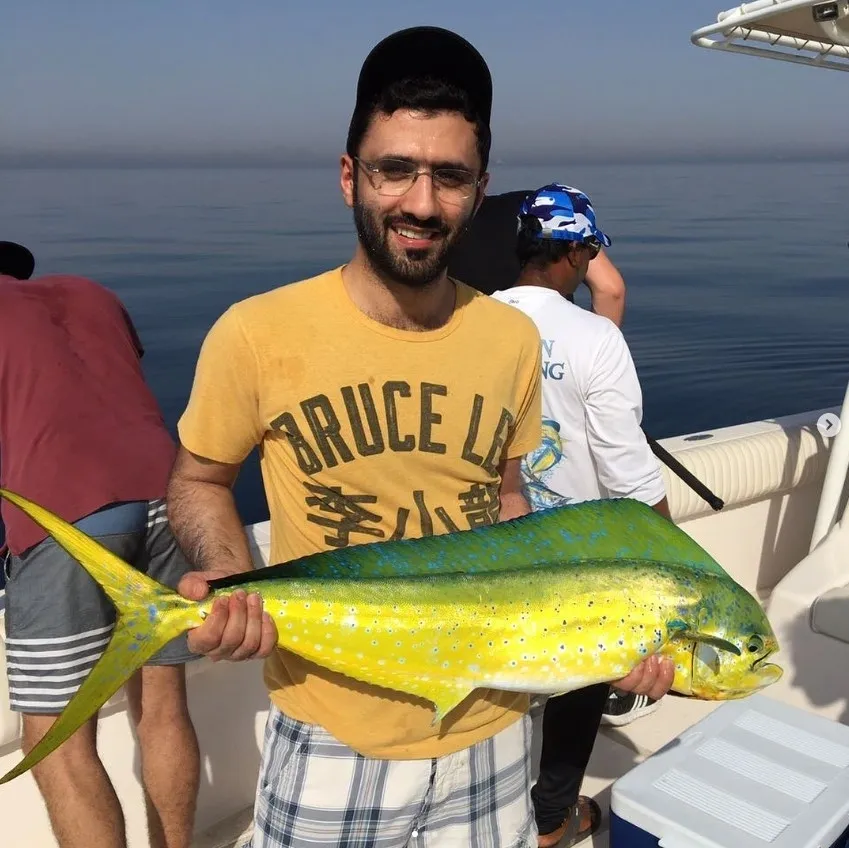Mahi-Mahi Habitat
They are commonly found swimming around the surface and are often swimming in schools when encountered during deep-sea fishing trips.
Mahi-Mahi Feeding
They are known for aggressive and carnivorous feeding habits, and they feed on many marine species including mackerel, squid, crabs, zooplankton, and others.
Mahi-Mahis are often targeted by sea birds and other marine species, such as sharks, tunas, and marlins.
Mahi-Mahi Fishing Season in the UAE
Mahi-Mahis are frequently encountered on Fujairah fishing trips (i.e., fishing trips on the east coast of the UAR), however, they are not likely to be encountered off the coast of Dubai. Mahi-Mahis can be encountered throughout the year but tend to prefer the months from May to September.
Mahi-Mahi Fishing method (How to Catch Mahi-Mahi)
Mahi-Mahi fishing in the UAE can be successfully done through various fishing techniques including lure casting, lure trolling, and live bait trolling. They are also commonly targeted on spearfishing trips.
Fun facts about Mahi-Mahis
- Mahi-Mahis are color-changing fish. They tend to be vibrant and rich in color when in the water but lose the color richness a few minutes after being on the boat as their color changes to yellow-grey.
- Mahi-Mahis are very fast, with their speeds exceeding 95 km/h.
- The name ‘Dorado’ is derived from the Spanish language, standing for the term ‘golden’.
- Mahi-Mahis are strong fighters and are quite challenging to catch.
- Mahi-Mahis are considered a delicacy, and when talked about among UAE citizens, the saying goes like “إذا بتشتري العنفلوص لا تفكر في الفلوس”, which means “If you will buy Mahi-Mahis, you should not think about money” emphasizing its perceived market value.

Mahi-Mahi Caught in Fujairah by Instagram @phoebeleahtooker
Mahi-Mahi Minimum Legal Length: There is no minimum legal length.
Fishing Status: Not banned.

